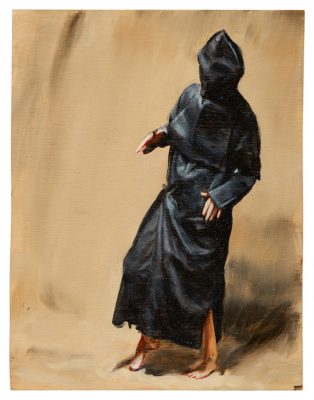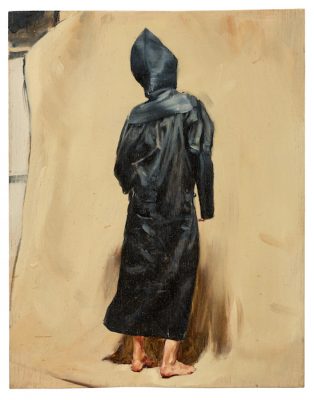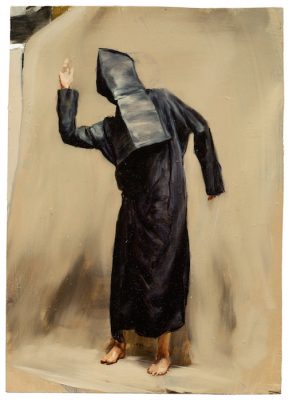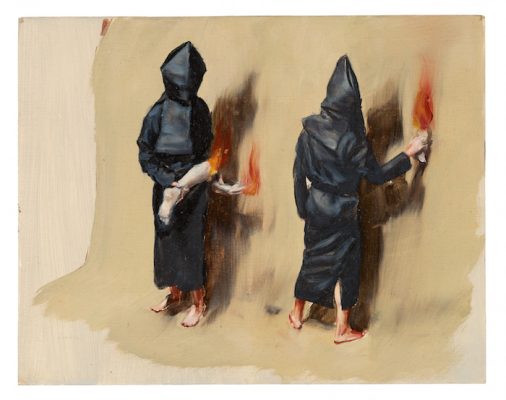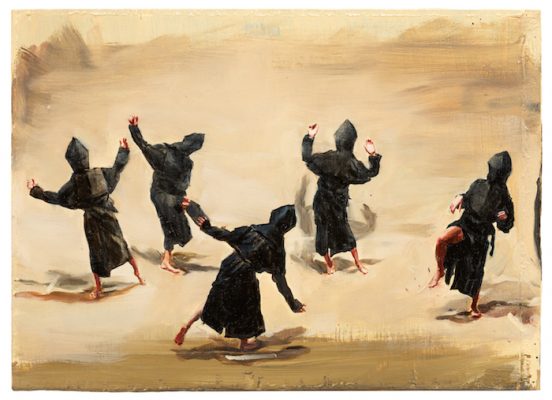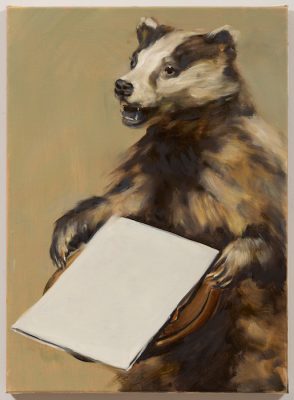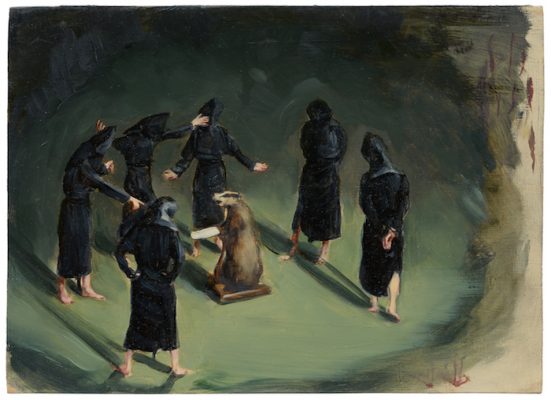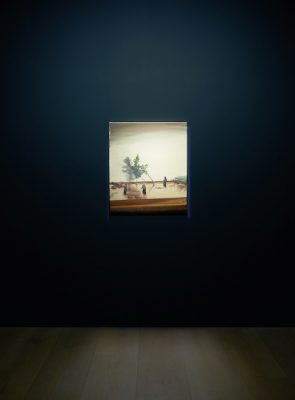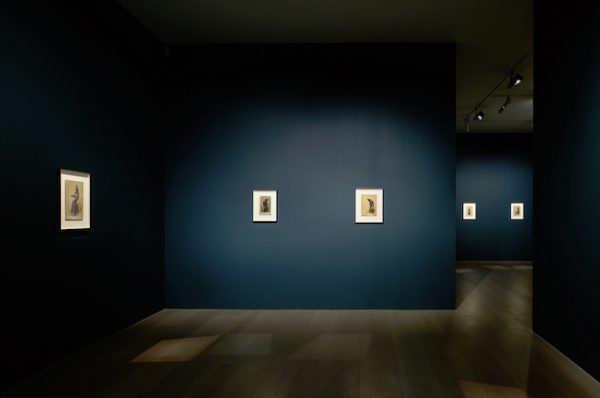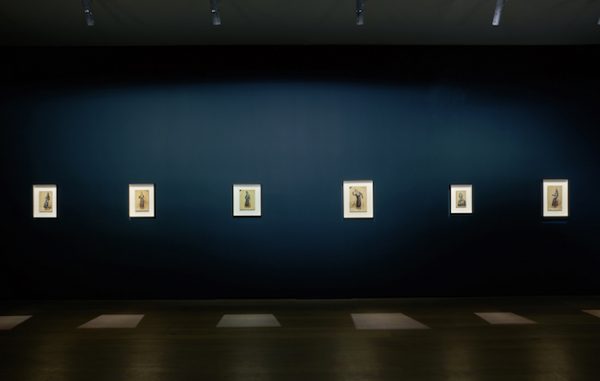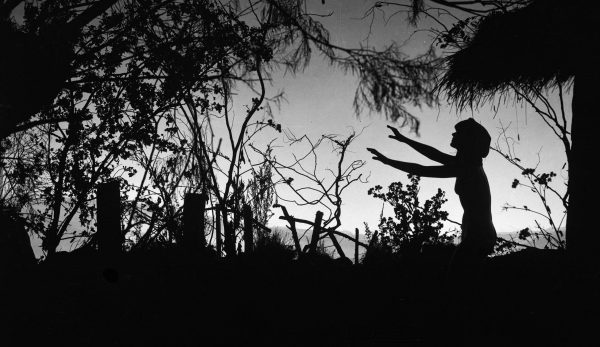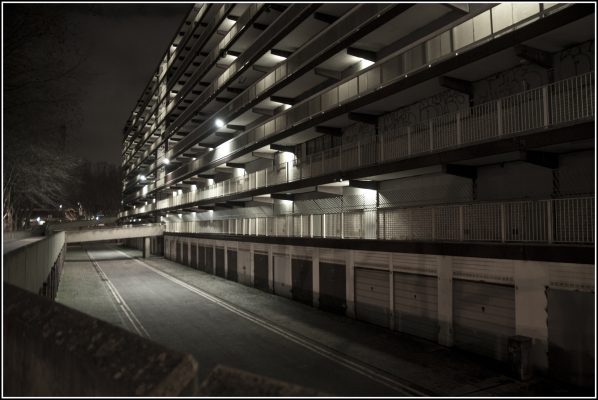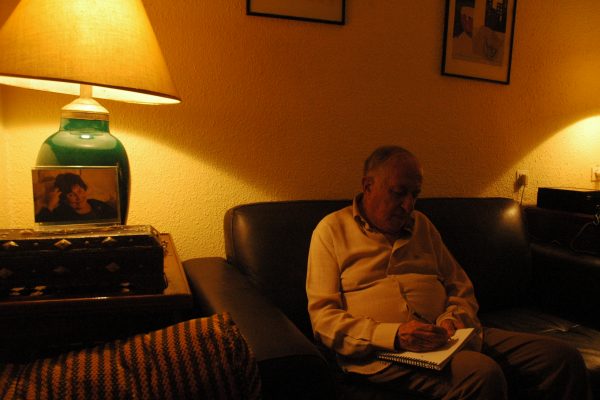Michaël Borremans is among the most important painters at work in the world today. His practice combines a lifetime’s engagement with the history of painting – Goya, Manet, Velázquez and Magritte cast long shadows over the dark, enigmatic elegance of his subject matter and his brushwork – with a contemporary sensibility conditioned by the violence of recent European history, the legacy of surrealism and the new possibilities for image-making offered by photography and cinema (in both of which media he has worked).
The lower gallery of the Belgian artist’s latest exhibition at David Zwirner, London, is populated by a chorus line of dancing figures cloaked in the black robes and pointed hoods of a Bunraku puppeteer. These eighteen, exquisitely painted oil paintings on board encircle the room, enacting a ritual performance with the gallery-goer at its centre (the artist conceives of the series as a single work). On the gallery’s upper level are ranged a supplementary cast of hooded figures, here performing inscrutable acts, at turns violent, meditative and surreal. The suggestiveness of his set pieces – the costumes alone conjure such disparate associations as the Ku Klux Klan’s ‘glory suits’, monastic robes, Abu Ghraib and the so-called War on Terror – is counterpointed by their refusal to offer up any conclusively satisfying single interpretation. As narratives they unravel, offering up only visions of a world operating according to rules that are obscure and by extension frightening, which isn’t to say that world isn’t our own.
I talked to Jeffrey Grove, curator of As sweet as it gets, the major retrospective of Borreman’s work co-hosted by Dallas Museum of Art and the Centre for Fine Arts Brussels (BOZAR) and a long-time champion of Borremans, on the eve of the opening of the Zwirner show. Having walked through the exhibition, we perched on a recessed ledge in the upper gallery in semi-darkness, surrounded by paintings glowing and haloed under spot lights.
